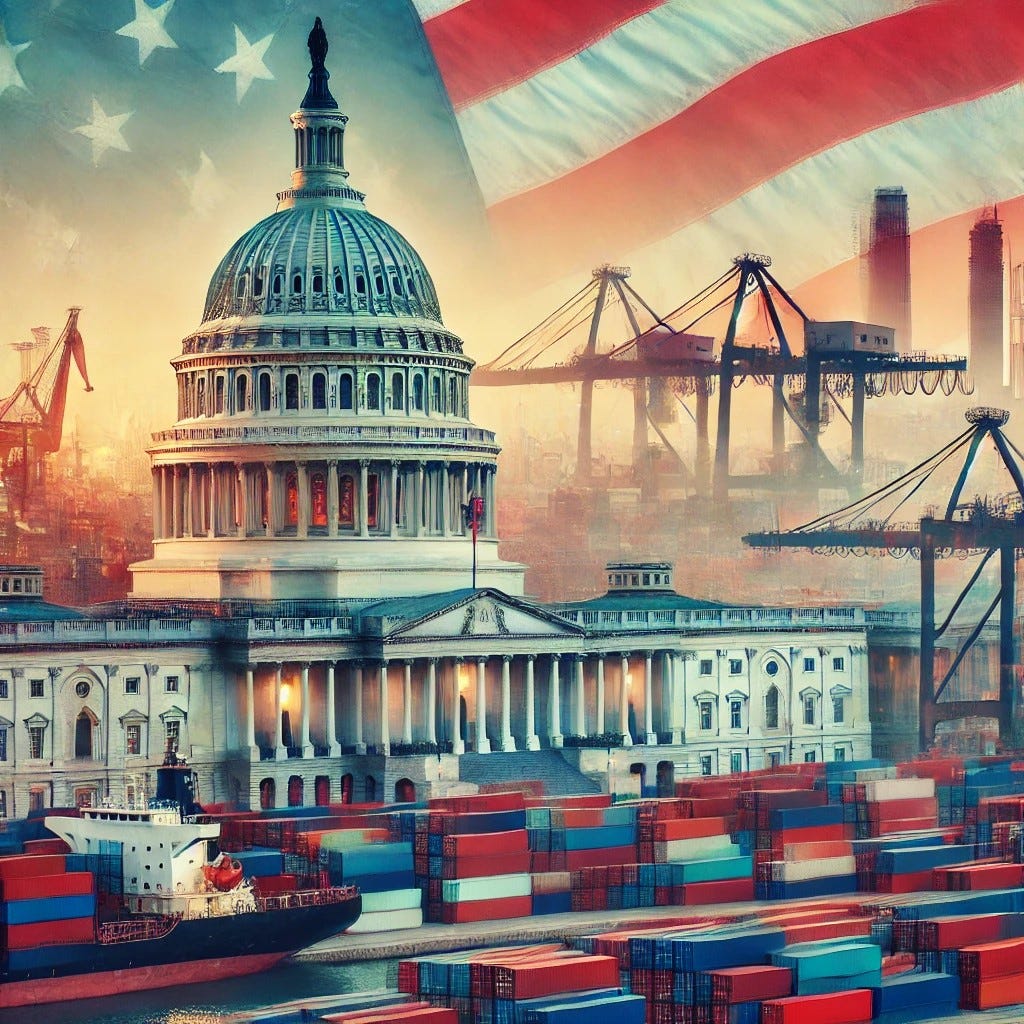The Resurgence of Tariffs in the US: What It Means for the Economy and Global Trade
Tariffs have re-emerged as a key US trade tool, aiming to protect jobs and industries but sparking global tensions, market volatility, and rising consumer costs.
Image constructed using ChatGPT
Introduction to Tariffs
Tariffs, taxes imposed on imported goods, have long been a tool for shaping economic policies, protecting domestic industries, and influencing trade balances. While historically used as a revenue source, modern tariffs serve as economic levers to encourage domestic production and discourage foreign competition. Under President Donald Trump, the US has reintroduced tariffs as a cornerstone of its economic and trade strategy, targeting key trading partners such as Canada, Mexico, and China. The rationale behind these measures includes curbing illegal immigration, reducing drug flow, and protecting American industries. However, the effectiveness and consequences of these policies remain widely debated.
Trump’s Tariff Strategy: Goals and Outcomes
Trump’s tariffs aim to achieve several US focussed objectives.
Protecting American Jobs
By making foreign goods more expensive, tariffs encourage domestic consumption of locally produced goods, theoretically preserving and creating American jobs.
Reducing Trade Deficits
The administration views trade deficits as a sign of economic weakness, seeking to reduce the US’s reliance on imported goods.
Strengthening Domestic Industries
Sectors such as steel and aluminium have received tariff protections to bolster American manufacturing.
Pressuring Trade Partners
Tariffs are used as leverage to negotiate better trade deals and curb unfavourable trade practices, particularly with China.
Despite these intentions, the actual outcomes have been mixed. For instance, while the tariffs increased government revenue and provided temporary relief for some domestic industries, they also triggered retaliatory tariffs from other nations. This escalation has disrupted supply chains, increased costs for American consumers and businesses, and contributed to inflationary pressures.
Keep reading with a 7-day free trial
Subscribe to Ely Court - Market Bites Global Commentary to keep reading this post and get 7 days of free access to the full post archives.




